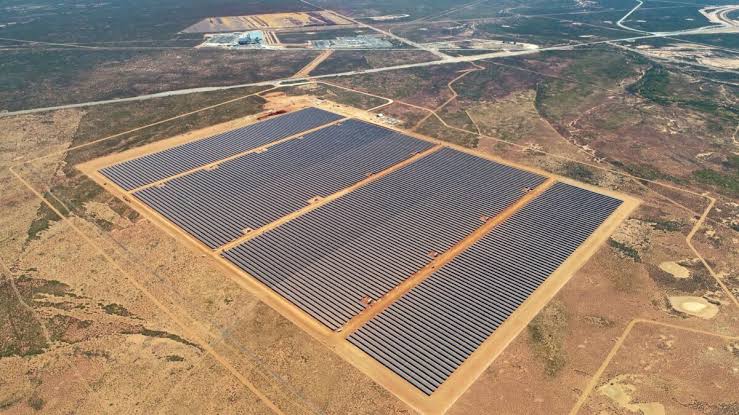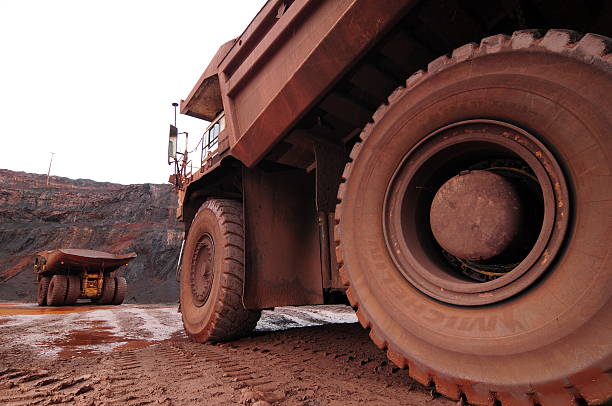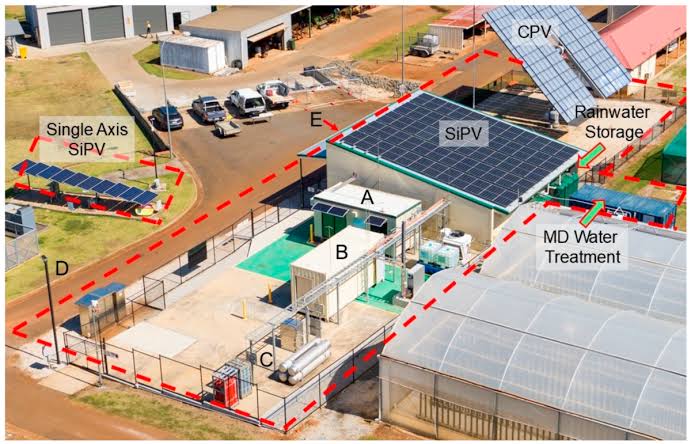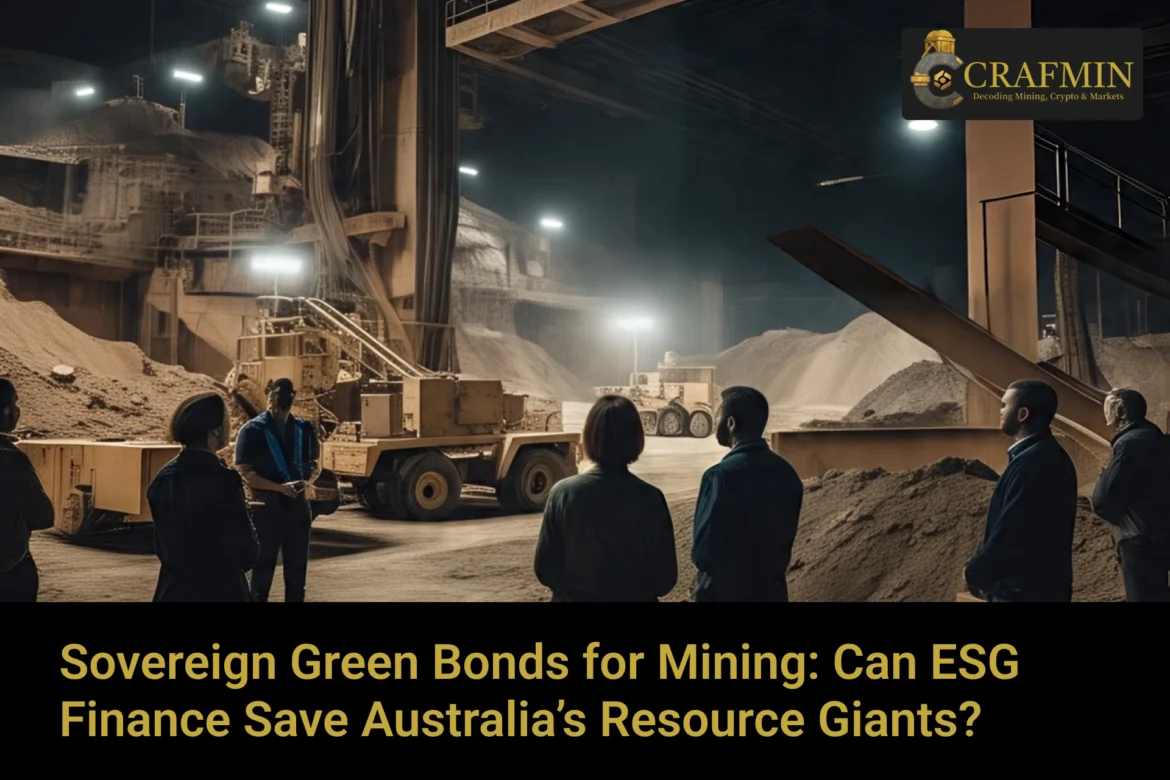A Green Lifeline for a Heavy Industry
Amid mounting international scrutiny and tightening decarbonisation targets, Australia’s mining sector faces a critical dilemma: how to remain globally competitive while rapidly cutting emissions. In response, a new financial mechanism is entering the conversation—sovereign green bonds for mining.
Launched in early 2024, the Australian Government’s green bond program was initially intended to support renewable infrastructure and low-carbon public assets. But in a recent policy shift, the framework has opened a new door: resource companies may now access green capital—provided the financing targets credible, measurable ESG outcomes.
 Aerial view of solar panels powering a Western Australian iron ore site.
Aerial view of solar panels powering a Western Australian iron ore site.
Image: Monford Group
A Policy Shift with Industry Implications
The expansion of the sovereign green bonds framework comes amid pressure from both international investors and domestic regulators. With global funds tightening ESG criteria, and supply chains demanding emissions traceability, Australia’s mining majors—BHP, Rio Tinto, Fortescue, and South32—have begun exploring ways to tie their decarbonisation strategies to green-labelled finance.
Treasury documents suggest that future bond allocations may include:
- Electrification of mining haulage fleets
- Renewable energy microgrids on mine sites
- Tailings dam rehabilitation
- Hydrogen-based processing pilots
Notably, the Clean Energy Finance Corporation (CEFC) is already in discussion with miners for co-financing green-certified projects under the new framework.
“ESG finance is no longer optional—it’s essential for access to global capital,” said Rebecca Kerr, ESG risk analyst at the Sydney Institute for Resource Futures.
Green Finance Meets Hard Commodities
The arrival of green bonds in Australia’s mining economy marks a notable departure from past narratives, where the sector was often positioned in opposition to environmental finance. Today, with rising pressure from export markets—particularly Europe and Japan—mining companies must now prove not only output, but environmental stewardship.
Sovereign green bonds for mining, when verified under rigorous environmental metrics, offer miners:
- Access to low-interest, long-duration funding
- Alignment with institutional investor mandates
- A clearer ESG narrative for shareholder reporting
However, the credibility of these bonds depends heavily on project validation, lifecycle accounting, and emissions reporting standards.

Fortescue’s electric haul truck pilot in the Pilbara, funded under ESG-linked credit.
Source: Getty Images/Paulo Fridman
Who Qualifies—and Who’s Watching?
Not every mining initiative will meet green bond criteria. The Australian Office of Financial Management (AOFM) and Climate Bonds Initiative are collaborating to define eligibility benchmarks specific to the resource sector.
Criteria under discussion include:
- Alignment with Science-Based Targets Initiative (SBTi)
- Use of renewable power for project operations
- End-of-life rehabilitation and biodiversity offsets
- Independent third-party verification
Investor scrutiny remains high. Already, pension funds in Europe and Canada are signalling that only fully aligned projects—with transparent environmental disclosures—will be considered bond-worthy.
“It’s not about slapping a green label. It’s about transforming operations and proving it,” said Julia Denholm, ESG investment lead at Auckland-based Reclaim Capital.
Also Read: Dredge Robotics Mineral Recovery Tech Is Transforming Australian Mining Ponds
Mining Giants Already Testing the Waters
- BHP has issued internal ESG-linked debt tied to its Scope 1 and 2 emissions reduction pathway.
- South32 has expressed interest in green bond co-financing for its Illawarra metallurgical coal decarbonisation program.
- Rio Tinto is piloting a hybrid capital structure for its low-carbon alumina processing expansion in Queensland.
Although none of these efforts are officially tagged under sovereign green bonds, they reflect growing readiness to blend public incentives with private transition capital.

Hydrogen electrolysis pilot at a Queensland copper site part-funded through green financing.
Image: Queensland University of Technology
Risks and the Greenwashing Question
Despite optimism, critics warn of potential greenwashing. Without watertight verification and transparent impact metrics, there’s concern that green bond funds could simply subsidise business-as-usual under a new colour scheme.
Environmental advocacy groups have urged the government to:
- Exclude fossil fuel-linked expansion
- Mandate lifecycle carbon reporting
- Enforce default repayment penalties for emissions overshoot
So far, the AOFM has responded by stating that all bond-backed projects will be reported in detail in annual impact disclosures, publicly available and independently audited.
Conclusion: From Extraction to Transition
As Australia’s mining industry navigates the global energy shift, the promise of sovereign green bonds offers both capital and accountability. But unlocking that promise depends on the sector’s willingness to move beyond incrementalism—to embrace transparency, verifiable progress, and genuine environmental transformation.
In this evolving era of ESG scrutiny and climate finance, miners who adapt early may not just survive—they may lead.

